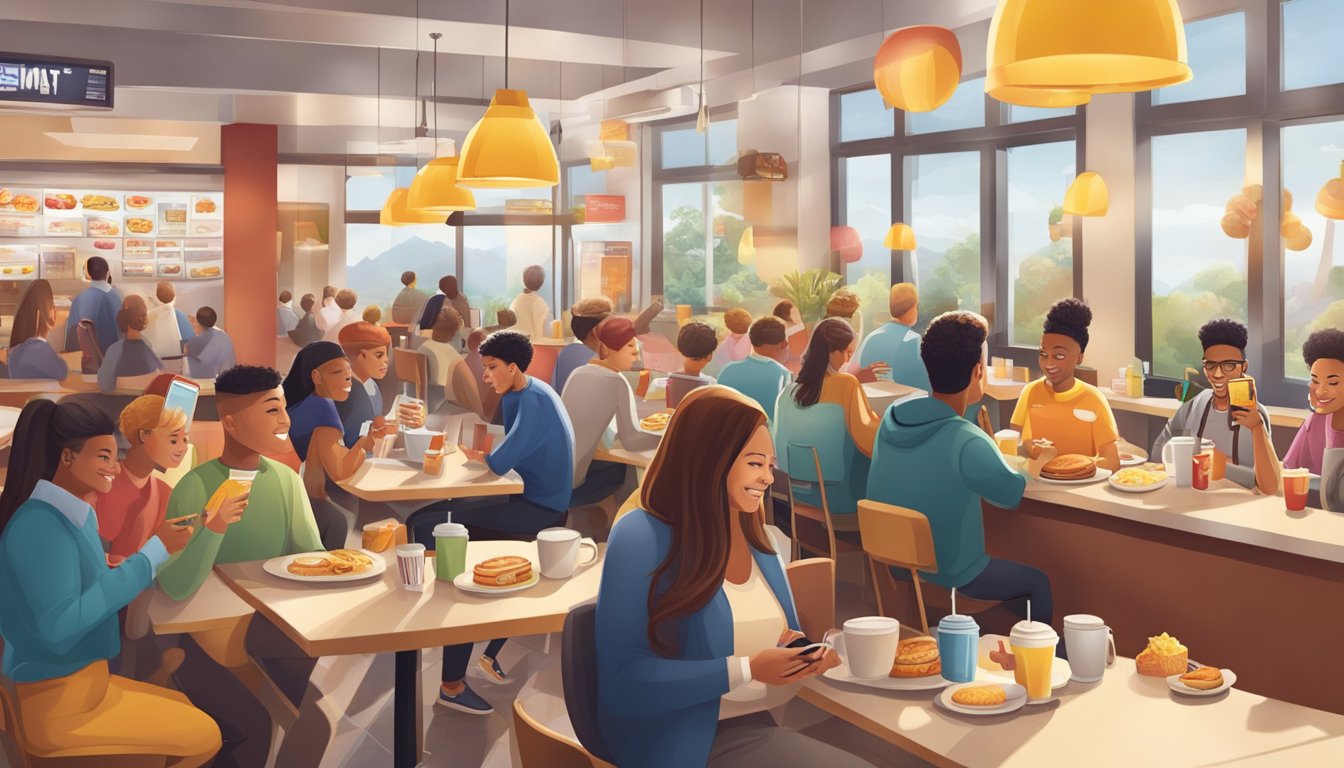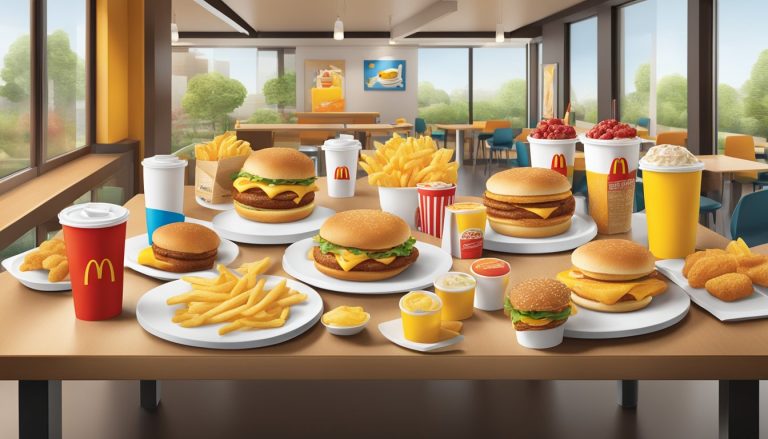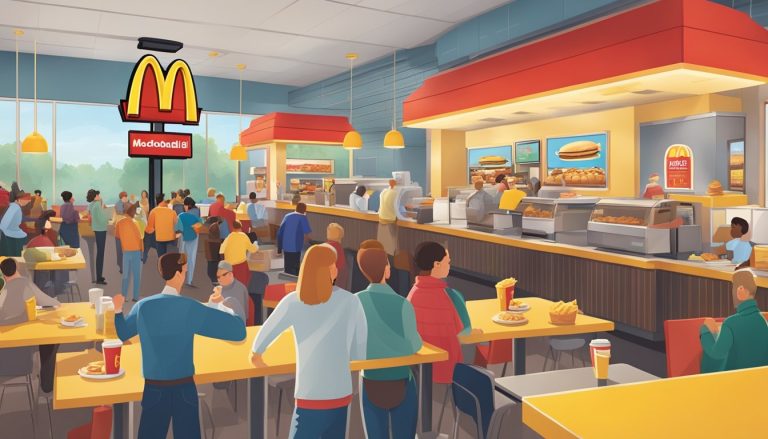McDonald’s revolutionized fast food breakfast culture in 2015 by introducing all-day breakfast. This move not only changed consumer expectations but also sparked a significant social media buzz. Social media platforms became the battleground for McDonald’s to promote and gauge public reaction to their expanded breakfast offerings.
The fast food giant leveraged various social media channels to build excitement and engage with customers. From countdowns to user-generated content, McDonald’s created a digital ecosystem that amplified the all-day breakfast message. This strategy tapped into the power of social networks to spread information rapidly and create a sense of community around the brand’s new offering.
Social media also provided McDonald’s with real-time feedback on their breakfast initiative. Customers shared their experiences, preferences, and even criticisms, allowing the company to adapt and refine their approach. This two-way communication fostered a more dynamic relationship between McDonald’s and its patrons, further embedding the brand into the digital breakfast culture.
Historical Context of McDonald’s Breakfast
McDonald’s journey into breakfast offerings revolutionized fast food culture and reshaped morning eating habits for millions. The introduction and evolution of their breakfast menu reflect changing consumer preferences and societal trends over decades.
Evolution of the Breakfast Menu
McDonald’s breakfast menu debuted in 1971 with the Egg McMuffin. This innovative sandwich, featuring an egg, Canadian bacon, and cheese on an English muffin, quickly gained popularity. By 1977, the chain launched a full breakfast menu nationwide.
The menu expanded to include hotcakes, sausage biscuits, and hash browns. In the 1980s and 1990s, McDonald’s added more options like the Sausage McMuffin and breakfast burritos. The McGriddles, introduced in 2003, combined sweet and savory flavors in a unique breakfast sandwich.
Recent years have seen healthier additions like fruit and maple oatmeal and egg white options. The launch of all-day breakfast in 2015 marked another significant shift, catering to changing consumer schedules and preferences.
Influence of Cultural Preferences
McDonald’s adapts its breakfast menu to suit local tastes and dietary habits in different countries. In Japan, the menu includes items like the Mega Muffin and rice-based dishes. UK locations offer porridge, while Indian outlets serve masala dosa burgers.
This cultural sensitivity extends to religious dietary restrictions. In predominantly Muslim countries, McDonald’s uses halal meat in their breakfast items. In India, where many avoid beef, chicken and vegetarian options dominate the menu.
The chain also considers regional breakfast traditions. In parts of Europe, they offer croissants and other pastries. Latin American locations might feature more robust breakfast platters with beans and tortillas.
These adaptations reflect McDonald’s strategy to balance global brand consistency with local relevance, ensuring their breakfast offerings resonate with diverse cultural preferences and dietary habits worldwide.
The Rise of Social Media
Social media platforms have transformed how fast food chains like McDonald’s connect with customers and promote their offerings. These digital channels have become essential for marketing breakfast items and shaping dining culture.
Changing Landscape of Marketing Channels
Facebook, Instagram, Twitter, and YouTube now play crucial roles in McDonald’s marketing strategy. The company leverages these platforms to showcase new breakfast menu items through eye-catching photos and videos. McDonald’s social media presence allows for real-time engagement with customers, gathering feedback and responding to inquiries about breakfast options.
Targeted ads on social networks enable McDonald’s to reach specific demographics interested in quick breakfast solutions. The brand also encourages user-generated content, with customers sharing photos of their McDonald’s breakfast experiences. This organic promotion helps build brand loyalty and expands the reach of McDonald’s breakfast messaging.
The Impact of Digital Marketing on Fast Food
Social media marketing has significantly influenced how fast food chains promote their breakfast menus. Instagram posts featuring aesthetically pleasing breakfast platters have become a powerful tool for McDonald’s to entice customers. The visual nature of platforms like Instagram and YouTube allows McDonald’s to highlight the quality and variety of their breakfast offerings.
Digital marketing enables McDonald’s to adapt quickly to trends and customer preferences. Real-time analytics from social media campaigns provide valuable insights into which breakfast items resonate with consumers. This data-driven approach allows for more effective menu development and targeted promotions.
McDonald’s leverages influencer partnerships on social platforms to expand its breakfast appeal to younger demographics. These collaborations often result in creative content that showcases McDonald’s breakfast items in fresh, engaging ways.
Social Media and Brand Identity

McDonald’s leverages social media to reinforce its brand identity and connect with customers. The company’s digital presence extends across major platforms, reaching millions of followers worldwide.
Creating a Recognizable Brand Voice
McDonald’s social media strategy focuses on developing a consistent and relatable brand voice. The company’s posts often use a friendly, casual tone to engage with followers. This approach helps humanize the brand and foster a sense of connection with customers.
One notable example is the “Our Food, Your Questions” campaign. This initiative addressed customer concerns directly, demonstrating transparency and building trust. By responding to inquiries in a straightforward manner, McDonald’s reinforced its commitment to customer satisfaction.
The brand also uses humor and timely content to stay relevant. Clever tweets and Instagram posts often reference current events or popular culture, keeping the brand fresh in consumers’ minds.
Leveraging Iconic Imagery
McDonald’s social media presence heavily features its iconic visual elements. The golden arches logo, signature menu items, and recognizable packaging are prominently displayed across platforms.
These familiar images serve multiple purposes:
- Reinforce brand recognition
- Evoke nostalgia and positive associations
- Showcase new products and promotions
The company frequently shares high-quality photos of menu items, appealing to users’ appetites. This visual strategy helps maintain brand awareness and stimulates cravings for McDonald’s food.
User-generated content also plays a role. By encouraging customers to share their McDonald’s experiences, the brand creates authentic connections and expands its reach organically.
Customer Engagement through Social Media
McDonald’s leverages social media platforms to foster meaningful connections with customers and build brand loyalty. The company employs innovative marketing strategies and community-building initiatives to enhance customer experiences and drive engagement.
Interactive Marketing Campaigns
McDonald’s executes creative social media campaigns to captivate audiences and encourage participation. The brand utilizes platforms like Instagram, Facebook, and TikTok to showcase new menu items and promotions. User-generated content contests inspire customers to share their McDonald’s moments, increasing brand visibility.
Hashtag campaigns tie into current events and trends, keeping the brand relevant. McDonald’s also employs influencer partnerships to reach wider audiences and add authenticity to their messaging. These interactive campaigns boost engagement rates and create buzz around new product launches.
Community Building and Engagement
McDonald’s fosters a sense of community through consistent social media interactions. The company responds promptly to customer inquiries and feedback, demonstrating commitment to customer satisfaction. This real-time engagement helps resolve issues quickly and improves overall customer experiences.
The brand shares behind-the-scenes content and employee stories, humanizing the company and building trust. McDonald’s also creates platform-specific content tailored to each social media channel’s audience. This strategy ensures relevance and maximizes engagement across different demographics.
User polls and Q&A sessions encourage customer participation and provide valuable insights for product development. By maintaining an active and responsive social media presence, McDonald’s strengthens customer relationships and cultivates brand loyalty.
Product Promotion and Campaigns

McDonald’s leverages social media to promote breakfast items through targeted advertising and celebrity partnerships. These strategies aim to increase awareness and drive sales of their morning menu offerings.
Advertising Campaigns for Breakfast Items
McDonald’s launches dynamic social media campaigns to showcase its breakfast menu. The company often uses eye-catching visuals and video content to highlight popular items like Egg McMuffins and hotcakes. Limited-time offers frequently feature in these promotions, creating a sense of urgency among consumers.
In 2015, McDonald’s introduced the “All-Day Breakfast” initiative in response to customer demand. This campaign utilized hashtags and user-generated content to spread awareness. Customers shared their excitement about enjoying breakfast items beyond traditional morning hours, amplifying the message across various social platforms.
Utilizing Influencers and Celebrity Endorsements
McDonald’s collaborates with influencers and celebrities to boost breakfast promotions on social media. These partnerships often involve sponsored posts showcasing individuals enjoying McDonald’s breakfast items. Celebrity endorsements lend credibility and increase engagement with younger audiences.
One notable example is the use of Olympic athletes to promote McDonald’s breakfast during major sporting events. These campaigns typically feature athletes sharing their “pre-game” meal choices from the McDonald’s menu. Such endorsements help position breakfast items as suitable for active lifestyles, appealing to health-conscious consumers.
Understanding Consumer Behavior
McDonald’s breakfast culture has been significantly shaped by social media’s influence on consumer preferences and behavior. Social platforms provide valuable insights into customer demographics, tastes, and demands, allowing the company to tailor its offerings effectively.
Analyzing Demographics and Preferences
McDonald’s utilizes social media data to analyze customer demographics and preferences. The company tracks engagement metrics, comments, and shares to identify popular breakfast items among different age groups and locations. This information helps McDonald’s create targeted marketing campaigns and menu items that resonate with specific customer segments.
Social media polls and surveys allow McDonald’s to gather direct feedback on potential new breakfast offerings. By monitoring trending food topics and hashtags, the company stays attuned to emerging dietary preferences and restrictions. This data-driven approach enables McDonald’s to adapt its breakfast menu to changing consumer tastes and health concerns.
Menu Diversification Based on Customer Demand
McDonald’s leverages social media insights to diversify its breakfast menu based on customer demand. The company closely monitors online discussions and reviews to identify gaps in their current offerings and opportunities for new products. This strategy has led to the introduction of healthier options like fruit and yogurt parfaits, and regional specialties tailored to local tastes.
Social media trends have also influenced McDonald’s to expand its plant-based and gluten-free breakfast choices. The company actively engages with customers on platforms like Instagram and Twitter to gauge interest in potential new items. This two-way communication allows McDonald’s to refine its breakfast menu continuously, ensuring it meets evolving consumer expectations and dietary needs.
Tackling Health and Sustainability

McDonald’s faces challenges in addressing health concerns and environmental impact. The company has implemented initiatives to improve nutritional offerings and reduce its ecological footprint.
Balancing Fast Food with Health Implications
McDonald’s has introduced healthier menu options to combat obesity concerns. Calorie counts are now displayed on menus, allowing customers to make informed choices. The company has reduced sodium content in many items and offers more salads, fruits, and vegetables.
McDonald’s has also improved its chicken welfare standards and removed artificial preservatives from several products. However, critics argue that many menu staples remain high in calories, fat, and sodium.
The company continues to face scrutiny over the long-term health implications of frequent fast food consumption. Nutritionists recommend McDonald’s be consumed in moderation as part of a balanced diet.
Sustainability Initiatives in Fast Food
McDonald’s has launched sustainability efforts to reduce its environmental impact. The company aims to source all guest packaging from renewable, recycled, or certified sources by 2025. It has also pledged to recycle guest packaging in all restaurants by 2025.
To decrease carbon emissions, McDonald’s is testing plant-based burger options in select markets. The company has committed to eliminating deforestation from its supply chain and improving beef production practices.
McDonald’s has partnered with environmental organizations to develop more sustainable farming methods for key ingredients. These initiatives demonstrate a growing focus on corporate social responsibility in the fast food industry.
Localization of McDonald’s Breakfast Menus

McDonald’s has successfully adapted its breakfast menus to cater to diverse tastes and cultural preferences worldwide. This strategy has allowed the company to maintain its global brand while offering locally relevant options.
Adapting to Local Tastes and Cultures
McDonald’s tailors its breakfast menus to match local palates and dining habits. In India, the menu features vegetarian options like the McAloo Tikki burger, made with a spiced potato patty. Japanese locations offer items such as the Teriyaki Egg McMuffin, combining familiar Western breakfast elements with popular local flavors.
The company sources ingredients locally when possible, ensuring freshness and supporting regional economies. This approach also helps McDonald’s align with cultural dietary restrictions and preferences. For instance, in Muslim-majority countries, all meat products are halal-certified.
McDonald’s adjusts portion sizes and meal compositions to fit local eating patterns. In some European countries, breakfast options include more dairy and whole grain products to match regional nutritional preferences.
Case Study: Successes in Menu Localization
One notable success in McDonald’s breakfast localization is the introduction of congee in Chinese markets. This traditional rice porridge, available in several flavors, has become a popular menu item. The move demonstrated McDonald’s ability to incorporate authentic local dishes into its offerings.
In Australia, McDonald’s added a “Brekkie Wrap” featuring egg, bacon, and barbecue sauce, catering to the country’s love for hearty breakfast sandwiches. This item quickly became a customer favorite, showcasing how localized options can boost sales and customer satisfaction.
The company’s McCafé concept, first launched in Australia, has been adapted globally with localized coffee blends and pastries. In France, McCafé offers high-quality espresso drinks and croissants, aligning with the country’s café culture.
The Economics of Breakfast at McDonald’s
McDonald’s breakfast offerings blend affordability with strategic pricing to maintain a competitive edge in the fast food market. The company leverages market research and branding strategies to maximize value for customers while boosting profits.
Pricing Strategies for Competitive Advantage
McDonald’s employs dynamic pricing for its breakfast menu, adapting to local markets and consumer preferences. The company often uses loss leader tactics, pricing certain items like coffee below cost to attract customers who then purchase higher-margin products.
Value meals bundle popular items like Hotcakes with beverages, providing perceived savings to consumers. This strategy encourages larger purchases and increases average transaction values.
McDonald’s also utilizes tiered pricing, offering premium options alongside budget-friendly choices. This approach caters to diverse customer segments and maximizes revenue potential across different price points.
Assessing the Value Proposition of McDonald’s Breakfast
McDonald’s breakfast value proposition centers on convenience, consistency, and affordability. The company’s extensive market research informs menu development, ensuring offerings align with consumer tastes and expectations.
Speed of service is a key factor, with drive-thru and mobile ordering options catering to time-pressed customers. This efficiency, combined with familiar menu items, creates a reliable experience that builds customer loyalty.
Brand recognition plays a crucial role in perceived value. The iconic Golden Arches and well-known products like the Egg McMuffin have become synonymous with quick, satisfying breakfast options.
McDonald’s leverages its supply chain efficiencies to maintain competitive pricing while preserving profit margins. This allows the company to offer breakfast items at price points often lower than local competitors or sit-down restaurants.
Digital Platforms and Sales
McDonald’s has leveraged digital platforms to boost sales and expand its brand reach. Mobile ordering and social media marketing have played crucial roles in driving customer engagement and revenue growth.
The Role of Mobile Ordering in Sales Growth
McDonald’s mobile app has significantly impacted sales. The app allows customers to place orders quickly and conveniently, leading to increased order frequency and value. In-app promotions and personalized offers have boosted customer loyalty and retention.
McDonald’s reported a 20% increase in sales through its mobile app. The convenience of mobile ordering has attracted new customers and encouraged existing ones to purchase more often. The app’s user-friendly interface and features like saved favorites have streamlined the ordering process.
Contactless payment options within the app have also contributed to its popularity, especially during the pandemic. This digital shift has helped McDonald’s adapt to changing consumer preferences and stay competitive in the fast-food market.
Leveraging Social Media for Brand Expansion
Social media platforms have been instrumental in McDonald’s brand expansion efforts. The company actively engages with customers on Twitter, Facebook, and Instagram to promote new menu items and gather feedback.
McDonald’s social media strategy focuses on creating shareable content and responding to customer inquiries. This approach has helped build a strong online community around the brand. The company’s social media presence has been particularly effective in reaching younger audiences, who are highly active on these platforms.
Collaborations with influencers and celebrities have amplified McDonald’s social media impact. These partnerships generate buzz and increase brand visibility among diverse demographic groups. McDonald’s has successfully used social media to promote limited-time offers and drive traffic to its restaurants and mobile app.
Strategic Corporate Alliances
McDonald’s has forged powerful partnerships to enhance its brand and expand its reach. These collaborations span multiple industries and have led to innovative market expansions, strengthening the company’s global presence.
Collaborations with Other Industries
McDonald’s strategically aligns with companies outside the fast food sector to boost its visibility and appeal. The partnership with Coca-Cola has been instrumental in shaping the McDonald’s dining experience. This alliance ensures a standardized beverage menu across McDonald’s global footprint, offering customers familiar tastes worldwide.
McDonald’s also collaborates with entertainment giants for promotional tie-ins. These partnerships often coincide with major movie releases or popular TV shows, creating limited-time menu items that generate buzz on social media platforms.
Innovative Partnerships for Market Expansion
To penetrate new markets, McDonald’s forms partnerships with local businesses and franchisees. This approach helps the company adapt its menu to regional tastes while maintaining core brand elements. In some countries, McDonald’s has partnered with convenience stores or gas stations to create hybrid locations.
The company has also embraced technology partnerships to enhance its digital presence. Collaborations with mobile payment providers and food delivery services have expanded McDonald’s reach beyond its physical restaurants. These tech-focused alliances have been crucial in adapting to changing consumer behaviors, especially in the wake of global events that shifted dining habits.




